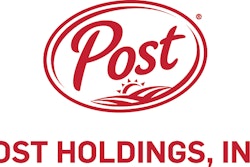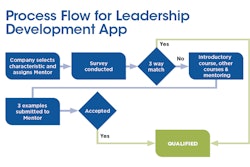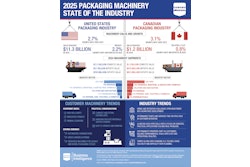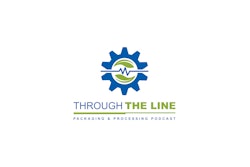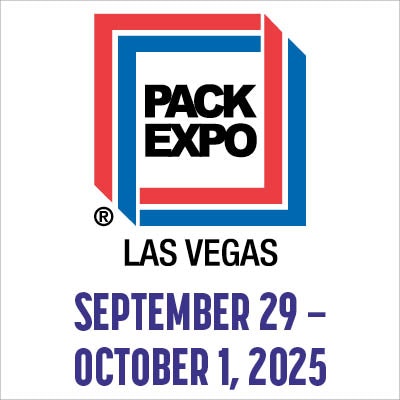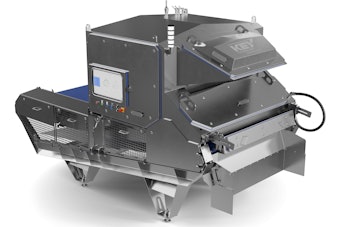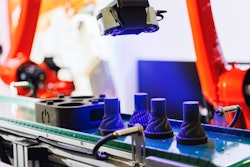In this episode, we chat with manufacturing expert David McGraw about AI's real-world applications. From predictive maintenance to smart supply chains, we delve into impactful use cases. Discover how generative AI democratizes access and learn how trust in AI can be built while gaining valuable insights for navigating the evolving landscape of AI in manufacturing.
To subscribe, rate, review, and find more unPACKed podcast episodes, visit pmmi.org/podcast or find us on Apple Podcasts, Spotify, iHeart Radio, or wherever you listen to your podcasts.
Sean Riley:
So with all the fancy introductions out of the way, welcome to the podcast, David.
David McGraw:
Thank you, Sean. It's great to be here.
Sean Riley:
The pleasure is all ours. So you just gave your presentation at the annual meeting, and one of the things that you found out pretty early was that a high percentage of the attendees weren't using AI yet. And I guess without going too deep, could you give a brief overview on how these manufacturing companies can use AI? What things that they can be using it to help themselves out?
David McGraw:
Yeah. And one of the things that I covered during the presentation, and I think it's a great place to start as far as use cases, it's always predictive maintenance.
Sean Riley:
Okay.
David McGraw:
Because of any use case, it's just one that is the most easily understood use case. It has generally decent impact, if not very good impact, and it feels like it's just a great place to start.
Sean Riley:
Okay. So jumping in with predictive maintenance is a good place to-
David McGraw:
Yes.
Sean Riley:
Okay. Now another one that you gave as an example, which I thought was pretty applicable to our industry was it was a simple use case involving a beverage company and a label. Could you expand on that a little bit for our listeners?
David McGraw:
Yeah. That's actually a very difficult use case.
Sean Riley:
Okay.
David McGraw:
So that use case would fall in the category of smart supply chain.
Sean Riley:
Okay.
David McGraw:
So in order to have a smart supply chain, you're going to have your vendors, yourself and your customer. They're already going to be somewhat digitally transformed, and in a position to trade data back and forth. In determining how are you going to broker that data back and forth, that is no easy task, as you can imagine you have three different companies, they're all going to have different opinions. But it is the most impactful set of use cases you can get to, because not only do you have your own data, you have the data of your customer, at least the data that's pertinent to you of your customer, and you have the data that's pertinent to you of your vendors. So it opens up just all the use cases you can imagine.
Now, if folks were plugged into a smart supply chain pre-COVID, then COVID hit, I think the question is, "Would we have had the same issues?"
Sean Riley:
That's fascinating.
David McGraw:
And I have thought about that question, and I honestly think, yeah, we probably would've had a lot of the same issues. I think the big difference may have been is they would've been more prepared, in the sense you would just know, "Hey, these things are happening on my shop floor. I can't get you this product." Maybe it would've opened the communication channel. So maybe the downtime would've been a little less, maybe it wouldn't have, but there would've been more data share. So it would've been interesting to see if things would've looked different. I'm not convinced it would've been, but it would've been a really interesting thing to see it play out.
Sean Riley:
Okay. So then circling back to that, how did the beverage label, how did that little smart supply chain, how did that use case work out?
David McGraw:
Yeah. The fundamentals there was I shipped the labels. The beverage company is going to provide me data back. And some of that data includes, "what's the ambient temperature of the surrounding area? How fast am I running these labels through?" If there was any additional printing that was happening, "What's the viscosity?" Things of that nature. Things that are relevant for me to potentially use to determine if there's a quality issue, what that root cause could be. So this client, the label company would go to the customer and say, "Hey look. This is data I'd like you to share with me.
By sharing this data with me, what you get out of it is a better quality product. And if you run into an issue, a quicker time to resolution."
Because the label company is still very dependent, at least on one of the suppliers, which is the ink manufacturers, so they go to the ink manufacturer and say, "Look. What data do I need to give you in order for you to help me root cause any quality issues?" And they come back and say, "Hey. This is some of the data that we need." When it's not just related to how that label was made, but it's also the upstream data on the customer. What was the temperature when they applied the label look like? So you have this flow of data. And once you have that flow of data, one, not only does it create that smart supply chain, but it creates an additional level of accountability. And if you ask me, this is my opinion, but also it feels like it's more of a network, right? I'm no longer your customer, and you're no longer my customer. We're just we're in it together-
Sean Riley:
Partnership.
David McGraw:
It's a partnership. So the impact is going to be huge. That is a future vision. It is an expensive, very difficult thing to do just because you're going to have so many different opinions. And probably the biggest issue is the end customer. Let's just say the beverage company is one of the top five beverage companies. They're going to have the investment dollars. You may or may not have the investment dollars, but as you get further and further down your supply chain, generally speaking, the companies in your supply chain get smaller and smaller. So how do you get those folks plugged in? Because they're not going to have the investments.
So that still needs to be considered. And the question really becomes who takes as if I'm the OEM, do I take responsibility and say, "Hey guys. Everyone in my supply chain, this is what I'm building. You need to fit into it"? Those are the questions that are going to need to be answered. It'll be really interesting. And my hope is that generative AI has opened the eyes of executives. Now there's this thinking about AI, and I'm hoping that what they'll find is, "Hey. We need to make an investment. We've got to start somewhere and let's make the right investments to get us where we need to be in our journey."
Sean Riley:
And that's interesting that you mentioned generative AI. That was my next question was generative AI is the AI that the general public is most familiar with ChatGPT and things like that. So I saw during your presentation, I think you put up three advantages of generative AI versus traditional AI. Could you speak a little to them?
David McGraw:
Yeah. So right now, honestly, the biggest advantage of generative AI is that tools like ChatGPT tools like Bard, tools like Claude, they're available, and anyone can use it. It totally democratizes that use of AI. There is zero barriers to entry and there is zero cost to you to play with it and to see what it can do.
With traditional AI, a lot of the use cases I talked about on the plant floor, it's not that simple. You have to figure out, "How am I going to collect data if I'm not collecting data?" Right now I have a large data set, and that takes time. So if you're doing predictive maintenance, and that's a use case I said you should start with. So first thing you have to do is collect data. Second thing you have to do in that dataset is have failures, because you're trying to figure out what the pattern is.
So if you're looking at assets that don't fail often you might be collecting data for months or even years before you have enough failures in your dataset. So now, you're already six months to two years from the beginning before you really are doing anything of true value or of interest. Then, what are you going to do? You have to start writing the algorithms with your dataset. Then you start testing it and say, "Okay. I can get this level of accuracy in my predictions." What if that accuracy is low? You almost have to go back to the drawing board.
And it's very iterative. And because there's latency in between getting the data and doing something with the data, it can get very expensive. And the time-consuming aspect is the hard part, because we've all been preconditioned. We want everything right now. GenAI, you can have it right now, no cost to you. Companies like OpenAI, companies like Google, they've done all the heavy lifting for you, right? These models exist today, and you can go play with them right now, and nothing prevents you from doing it other than you logging on the machine and doing it.
Sean Riley:
Okay. So then the question that I held towards to last, but I'm going to have to ask it at some point, is it's a touchy subject for some people, AI. It's scary. It's going to take my job. It's going to replace me. How do you eliminate some of the concerns people may have about risk and how do you build trust with using AI? Especially in we're in packaging and processing, but manufacturing in general, we didn't really move to remote monitoring and things like that until we had to because of a pandemic. So how do you suggest that they can build that sort of trust or overcome those concerns?
David McGraw:
That is a fantastic question. So until recently, I shouldn't say all, the last 13 years of my career has generally been spent in manufacturing. And it's always been hard for me because I've been someone that's been pushing the AI and the use of it. But manufacturing, they're not bleeding edge as you alluded to. And it's always been a struggle, because I always thought it was a great place for AI to rear itself in. Maybe this is where trust could potentially be built. So trust comes from a multiple set of areas, trust in the results or the insights. That'll always be very hard to build trust in because there's always going to be naysayers. And AI is not perfect, it'll never be perfect. I don't ever see a time where it's going to be 100%. Remember, it's just like us. We make mistakes, we have flaws. It's going to act very similar to us. So there's that level of trust.
And what is so frustrating for me is when it comes to AI, and I think it's basically because of some of the things you mentioned, there's a fear of it. We hold its outputs at a higher level than the outputs of human. And by that, when it's wrong, everyone's all, "Look how stupid that thing is. It's wrong. It's always wrong." It's wrong one or two times. But a person's wrong two, three times. It's not a problem, "Oh. Mistakes are made." So that's always been a frustrating piece for me. Technology, it's going to be a long time. We'll probably be dead and gone before it's better than humans in a lot-
Sean Riley:
There's an expectation of perfection.
David McGraw:
There's an expectation of perfection, but the same expectation doesn't exist with humans. There's also a different lens of trust that we can look at. And it's this trust of, "Will it take our jobs?" And probably not in the near term. And as I mentioned during my presentation, the fear most people should have is if you have a set of people in your organization that use it and you have a set of people in your organization that don't, the folks that use it would probably be around. The people that don't, won't. And the analogy I use is early in my career, I started my career when the internet was gaining its popularity. And I was a low level programmer early in my career, and I sat next to folks that were more experienced than I am. And I'd run into an issue and I'd search on Google, or search on whatever the search engine of the year was back then on what my issue was and how I could resolve it.
And generally speaking, I would find it, but the folks that weren't using the internet would laugh at me. And they're like, "That's dumb. Just look in the reference manual." And what would take me minutes would take them hours. And what ultimately ended up happening is let's say in the span of three to five years, I was there and they weren't, and they became dinosaurs.
Whether or not they could find the job probably was dependent on if they were willing to adopt the internet. And I think this is even more transformational than access to the internet, because in the internet you get a search, you get a lot of links, you have to go through the links, find the right answer. Here, it gives you the answer most of the time. Sometimes it's right, sometimes it's wrong. And then as humans, we're just going to have to learn to interact with this technology. And we've done it right? Look at 50 years ago, I don't think anyone was interacting with a computer. And then we had desktops. Now we have laptops. Or not so long ago, we're primarily interacting with laptops.
Now, it's my phone, my tablet, maybe my laptop. And things will change. What happens when we have a smart device where I don't have to look at a screen, I can see it in a pair of glasses, or I can communicate it? It's going to get interesting. I don't know. Right? The question I always have Sean, is, "How much is it going to impact my life versus how much will it impact my seven-year-old son's life?" And I think there's probably more impact to him than to me, because the fact I'm on the [inaudible 00:13:33]-
Sean Riley:
Yeah.
David McGraw:
[inaudible 00:13:34].
Sean Riley:
But that's an interesting point about the internet. I don't feel that the internet was thought of as scary as AI is, for lack of a better word, even though it did have the potential to take people's positions. But like you said, it was more people being willing to use this tool versus those that aren't willing to use it, that kind of got left behind.
David McGraw:
And I think it'll happen here. And look, AI will always have this bad taste in people's mouth because of all the movies and the way AI has been presented, at least through the lens of Hollywood, it's going to be beneficial.
It'll have challenges, it'll create new jobs. Our folks' jobs will change over time. And even at the firm I'm at now, one of the things we're talking about is, "Well, we have to get our consultants really good at prompt engineering." So the prompt is how you talk to ChatGPT to get the response in a format that's best for you or to get a good answer.
So that's going to become a skillset. And we're just going to see over time where this goes, and a lot of folks ask questions about regulation. What's ultimately going to happen is the government will probably be slow to react until something major happens, and then they'll be very quick to take action, and they'll probably shoot over. And that's what scares me the most. And I don't blame the government, this stuff is moving at rapid pace. It's very difficult to get all the right people in a room together and agree on anything much less, "What's the policy we should run in?" Because everyone's coming with their own agenda, so it's going to be a struggle. The truth of the matter is, and the sad fact is something bad will probably have to happen, and then regulations will be overshot, and it will potentially clip some of the innovation. But we'll see.
Sean Riley:
Okay. This was fantastic. I can't thank you enough David for taking a little bit of extra time to come on here with us, and talk us through this AI. So thanks again for coming on.
David McGraw:
Yeah. No. Thank you. Really appreciate it. Had a great time.



